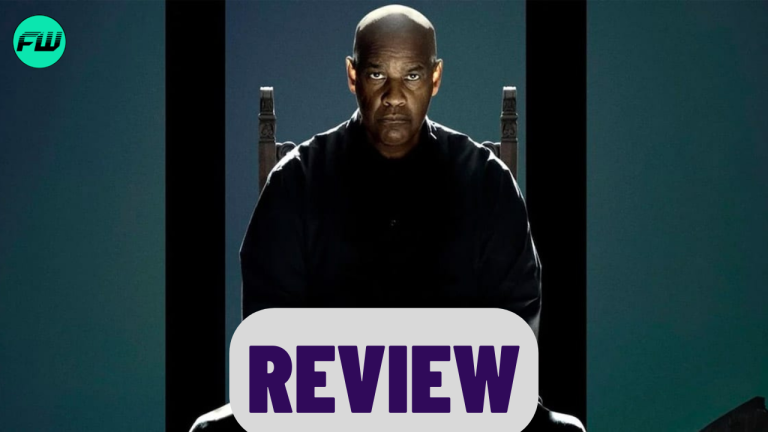Although initially debuting as an independent comic in 1984, the Teenage Mutant Ninja Turtles franchise, or TMNT for short, wouldn’t hit mainstream success until the animated series adaptation three years later. From there, it blossomed into a worldwide phenomenon spawning multiple films, TV shows, video games and so on; with the latest feature adaptation, the animated TMNT: Mutant Mayhem, hitting theaters this Wednesday. But we’re not here to talk about the animated Turtles.
For you see, while the Turtles have gone through many different incarnations and permutations over the years (Pardon the pun), one of my personal favorites remains the first feature film adaptation and the first live-action adaptation period. Simply titled Teenage Mutant Ninja Turtles, the 1990 film manages to be a perfect time-capsule of the late 80s and early 90s while feeling like a mostly timeless adaptation; a seamless blend of the early arcs of the original comics with the much-needed injection of personality from the 1987 series. So today, I want to talk about this movie, why I love it, and what I think this new slate of TMNT films can learn from it.
Also Read: Teenage Mutant Ninja Turtles: 12 Earth-Shattering Facts
The Plot

In the midst of a mysterious crime wave in New York City, reporter April O’Neil, portrayed masterfully by Judith Hoag, finds herself the target of its perpetrators, a newly reborn ancient ninja clan called The Foot. The Foot originated in Japan but found new life in New York by luring in at-risk teenagers with what essentially functions as the 90s gangster version of Pleasure Island from Pinocchio before being trained in martial arts and brainwashed into a life of crime by their leader: Oroku Saki, aka The Shredder.
Meanwhile, four teenage talking mutant turtle brothers, named for the Renaissance artists Leonardo, Donatello, Michelangelo, and Raphael respectively, have begun fighting crime on the surface after spending the last fifteen years living underground in the sewers. There, they have been trained and raised by their adoptive father, Splinter, a mutated talking rat and former pet of martial arts master Hamato Yoshi.
It isn’t long before these three storylines cross paths. The Foot’s criminal activities obviously do not mesh with the Turtles and April’s sense of justice, with April becoming friends with the Turtles after being rescued by Raphael. Soon, Splinter is kidnapped and April’s apartment is ambushed by The Foot, with Raph being put into a coma during the fight. This forces the Turtles, April, and Elias Koteas’ Casey Jones, coincidentally the best incarnation of the character across the entire franchise, to recuperate at April’s family farm upstate.
Our heroes take the necessary time to recover before heading back to the city to take down The Foot once and for all. During the final rooftop battle against The Shredder, the Turtles learn that Oroku Saki was Hamato Yoshi’s friend turned rival and the one who cut off Splinter’s ear. Our heroes struggle to defeat Shredder, but they ultimately trick him into running off the rooftop in order to be crushed inside a garbage truck, which according to the sequel, he somehow survived. The Turtles are victorious regardless and the film ends on a brotherly “Cowabunga!” before Partners in Kryme’s infectiously catchy “Turtle Power” rap plays over the credits.
Background & Legacy

TMNT (1990) was made for $13.5 million and was soundly rejected by almost every major studio at the time due to fear that a film based on a cartoon, even one as popular as Ninja Turtles, would be doomed to fail at the box office. It eventually managed to find distribution at New Line Cinema about midway through production and would go on to gross over $200 million worldwide, making Teenage Mutant Ninja Turtles the highest-grossing independent film at the time, if only on a technicality.
Splinter and the Turtles were brought to life using puppetry by the Jim Henson Creature Shop, the Turtles specifically utilizing four, highly sophisticated, and completely unique animatronic suits worn mostly by stunt performers on set before being dubbed over for the final film. TMNT would actually be one of the final productions worked on by Jim Henson himself before his untimely death in May 1990, just two months after the film’s release. The sequel, Secret of the Ooze, is dedicated to his memory.
While the suits themselves were infamously hot and often impractical, it’s hard to deny the effectiveness of the result. The Turtles look magnificent in this film and the technology used not just to bring their main body movements to life, but also capture realistic mouth movements and facial expressions remains impressive to this day. All four of them feel like living, breathing parts of this world thanks both to the excellent performances and the craftsmanship behind the puppetry.
And more than that, everything about the film itself just works on a fundamental level. The action scenes are consistently engrossing, the stakes feel real, the characters are charming, and even at only around 90 minutes, the film manages to find the time to let the characters be characters. Little moments of levity like the Turtles doing impressions for April or more somber moments like the campfire scene go a long way in making TMNT (1990) feel more grounded and authentic than just about any other adaptation, while still maintaining the goofy charm that makes Ninja Turtles what it is.
What TMNT: Mutant Mayhem Can Learn From 1990

To be clear, I am not intending to bash Mutant Mayhem here. On the contrary, I think the film looks spectacular and definitely has the potential to be the new best TMNT movie. The cast is great, the stylized animation is a visual feast, and I appreciate how it seems to be leaning into the Turtles actually being teenagers, an element oft forgotten in most adaptations. But if there is one thing I hope Mutant Mayhem and its planned follow-ups take from the 1990 film, it’s this: Don’t be afraid to be dangerous.
TMNT (1990) showed kids being driven to crime by a megalomaniacal cult leader through the promise of cigarettes and free arcade games. It showed our heroes getting hurt, both physically and emotionally, and needing time to heal. It showed real people in real danger with real stakes based on stuff that can and does happen in the real world. Too much stuff aimed at kids across all eras feels the need to talk down to them and sand down the edges without realizing that they can handle a little danger and it might even be good for them.
In short, I hope that Mutant Mayhem lets itself be grimy. That it lets itself showcase the real dangers that can come with being an outsider alongside the joy that comes from finding community. I hope it shows a New York City that isn’t overly sanitized or gentrified for a mainstream audience. I hope that when our heroes get hurt, we feel their plan alongside them. And I hope I walk out of my Mutant Mayhem screening doing exactly what the Turtles did at the end of the 1990 movie: victoriously and enthusiastically shouting “Cowabunga!”
Follow us for more entertainment coverage on Facebook, Twitter, Instagram, and YouTube.











